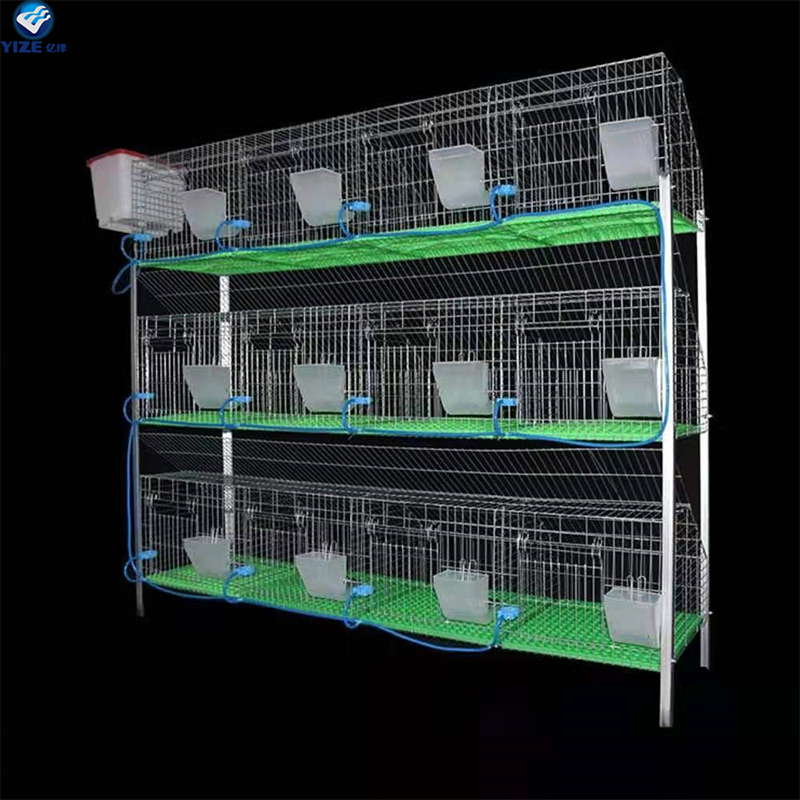Innovations in Chicken Layer Battery Cage Systems for Enhanced Poultry Farming Efficiency
Nov . 06, 2024 07:48 Back to list
Innovations in Chicken Layer Battery Cage Systems for Enhanced Poultry Farming Efficiency
The Chicken Layer Battery Cage An Overview
In contemporary animal husbandry, the use of chicken layer battery cages has become a standard practice for the production of eggs. These cages are designed to house hens in a manner that maximizes efficiency and production, while minimizing costs for producers. However, this method of rearing layers has sparked a fierce debate regarding animal welfare, environmental impact, and the ethics of food production.
What are Chicken Layer Battery Cages?
Battery cages are small, confined enclosures that house several hens at a time. Typically composed of metal and arranged in rows, these cages allow for dense population of birds, facilitating easier management by farmers. Each bird is allocated a minimal space, often less than the size of an average sheet of paper, which can hinder natural behaviors such as walking, nesting, and flapping their wings. As a result, the use of battery cages significantly alters the natural living conditions of hens, raising serious concerns about their welfare.
Efficiency and Production
From the perspective of egg production efficiency, battery cages offer several advantages. They enable farmers to produce a large number of eggs in a relatively small area. The system allows for automated feeding and egg collection, reducing labor costs and the potential for human error in the feeding process. This method also minimizes the risk of disease transmission among the flock, as the birds are kept separate from one another. Consequently, battery cages have been credited with contributing to the surge in egg production observed over recent decades.
Animal Welfare Concerns
chicken layer battery cage

Despite the economic benefits, the welfare of chickens raised in battery cages has been a focal point of controversy. Critics argue that the confined spaces lead to physical and psychological stress for the birds. Hens in battery cages often exhibit signs of frustration and distress, leading to abnormal behaviors such as feather pecking and cannibalism. Additionally, the inability to express natural behaviors has been linked to long-term health issues, including osteoporosis and other conditions resulting from a sedentary lifestyle.
Amid growing public awareness and concern, numerous animal welfare organizations have campaigned against the use of battery cages. They advocate for alternative systems such as free-range and enriched cages, which allow hens greater freedom to move, perch, and engage in natural behaviors. Many countries and regions have responded to these concerns by enacting legislation to phase out battery cages, favoring practices that prioritize animal welfare.
Environmental Impact
Beyond animal welfare, the environmental implications of battery cage systems are also noteworthy. High-density farming practices can contribute to pollution through waste runoff and the overuse of antibiotics, which can lead to antibiotic-resistant bacteria. Additionally, the space efficiency of battery cages may encourage unsustainable farming practices, driving producers to prioritize production over ecological considerations. Transitioning to more humane and sustainable farming practices could mitigate these environmental concerns and promote a healthier ecosystem.
Conclusion
In conclusion, chicken layer battery cages embody the complexities of modern egg production. While they offer significant advantages in terms of efficiency and cost-effectiveness, they also pose serious ethical and environmental challenges. The future of poultry farming depends on finding a balance between meeting global demand for eggs and ensuring the welfare of chickens. As consumer preferences evolve and governments tighten regulations, the industry may ultimately shift towards more humane and sustainable practices that respect the animals at the heart of egg production. As discussions continue, it is essential for all stakeholders—producers, consumers, and policymakers—to engage in a dialogue aimed at fostering a more ethical and sustainable approach to food production.
-
Automatic Feeding Line System-Pan Feeder Nipple Drinker|Anping County Yize Metal Products Co., Ltd.
NewsJul.29,2025
-
Hot Sale 24 & 18 Door Rabbit Cages - Premium Breeding Solutions
NewsJul.25,2025
-
Automatic Feeding Line System Pan Feeder Nipple Drinker - Anping County Yize Metal Products Co., Ltd.
NewsJul.21,2025
-
Automatic Feeding Line System Pan Feeder Nipple Drinker - Anping County Yize Metal Products Co., Ltd.
NewsJul.21,2025
-
Automatic Feeding Line System - Anping Yize | Precision & Nipple
NewsJul.21,2025
-
Automatic Feeding Line System - Anping Yize | Precision & Nipple
NewsJul.21,2025






